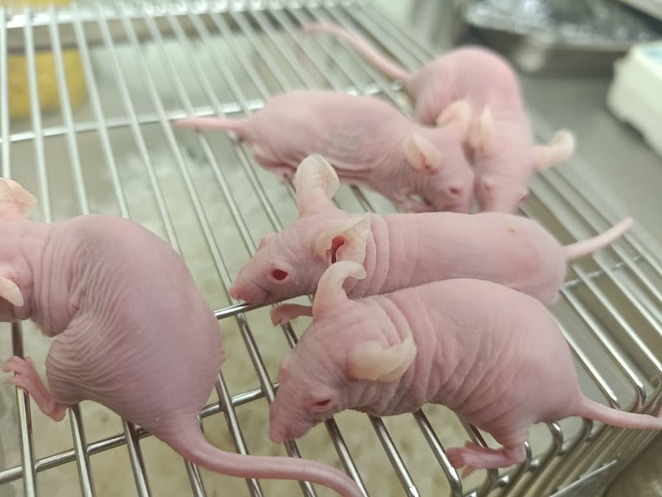
Nude mice, also known as athymic mice, are a unique strain of laboratory mice characterized by a genetic mutation that results in the absence of a functional thymus, leading to a severely compromised immune system. This makes them invaluable in biomedical research, particularly in studies involving xenografts, cancer research, and immunology. Below is a detailed explanation of how nude mice are produced and their applications in bioresearch.
Nude mice are produced through selective breeding and genetic manipulation. The key genetic mutation responsible for their phenotype is in the FOXN1 gene, which is critical for thymus development and hair growth. Here’s how they are produced:
Genetic Basis: The mutation in the FOXN1 gene (denoted as nu/nu) leads to the absence of a thymus, resulting in a lack of mature T cells and a compromised adaptive immune system. This mutation also causes the characteristic hairless phenotype. Breeding Strategy: Nude mice are typically bred by crossing homozygous nude males (nu/nu) with heterozygous females (nu/+). This breeding strategy ensures that approximately 50% of the offspring will be nude mice (nu/nu), while the other half will be heterozygous (nu/+) with normal thymus function. Housing and Care: Due to their immunodeficient nature, nude mice require specific pathogen-free (SPF) environments to prevent infections. They are housed in sterile conditions with strict biosecurity measures, including the use of personal protective equipment (PPE) and regular sanitization of cages and facilities.
Nude mice are widely used in biomedical research due to their unique immunological characteristics. Below are their primary applications:
Tissue and Organ Grafts: Nude mice can accept grafts from other species, including human tissues, making them useful for studying tissue compatibility, graft survival, and regenerative medicine.
Stem Cell Research: They are used to study the differentiation and function of human stem cells in vivo, providing insights into stem cell therapy and tissue engineering.
While nude mice are highly valuable in research, there are some challenges: Fragile Health: Their immunodeficient nature makes them susceptible to infections, requiring stringent SPF conditions. Limited Lifespan: Nude mice typically have a shorter lifespan (6–12 months) compared to normal mice, which can limit long-term studies. Variability in Tumor Take Rates: Not all human tumors successfully grow in nude mice, and tumor take rates can vary depending on the tumor type and inoculation site.
Nude mice are a cornerstone of biomedical research, particularly in cancer, immunology, and transplantation studies. Their unique genetic makeup and immunodeficient phenotype enable researchers to conduct experiments that would be impossible in immunocompetent models. However, their care requires meticulous attention to hygiene and experimental controls to ensure reliable and reproducible results.
For further details, you can refer to the sources cited above, such as Zistbalin technical group , which provide comprehensive information on nude mice and their applications.